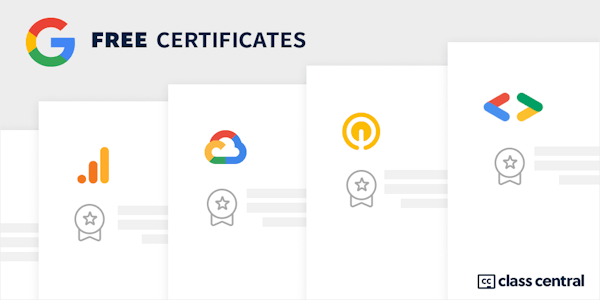Overview
Class Central Tips
In the final course, we'll tie together the concepts that you’ve learned up until now. You'll tackle real-world scenarios in Qwiklabs that will challenge you to use multiple skills at once.
First, we'll take a closer look at how to use external Python modules to extend your code's capabilities, and spend some time learning how to use documentation to learn a new module. For example, we'll use the Python Image Library (PIL) to create and modify images. We'll show you some simple examples of how to perform common tasks in the course material, but it will be up to you to explore the module documentation to figure out how to solve specific problems.
Next, we'll show you how to communicate with the world outside of your code! You'll use data serialization to turn in-memory objects into messages that can be sent to other programs. Your program will send messages across the network to Application Programming Interfaces (APIs) offered by other programs. For those times when your code needs to talk to a person instead of a program, you'll also learn to send email messages.
At the end of this course, you’ll be able to take a description of a problem and use your skills to create a solution -- just like you would on the job. In your final capstone project, you'll be given a description of what your customer needs, and it will be up to you to create a program to do it!
Syllabus
- Manipulating images
- In this module, you’ll be introduced to distributed systems and Non Abstract Large System Design or NALSD. We’ll cover built-in verse external libraries and go over API’s. Next, we’ll loop back to how to generate and manage containers, this time, focusing on VS Studio and Docker. You’ll learn how to use PIL for working with images. Finally, you’ll put what you learned into action in a lab where you will scale and convert images using PIL.
- Interacting with Web Services
- In this module, you’ll learn about web applications and services and APIs. We’ll cover RESTful APIs and REST architecture, as well as, how to use REST APIs to access web data. You’ll learn more about Flask and data serialization. Next, we’ll dive into the Python Requests Library and cover different request methods like HTTP GET and Post. Finally, you’ll be introduced to Django, a full stack web framework. You’ll complete a lab that uses Django to process text files with Python dictionaries and upload to a running web service.
- Automatic Output Generation
- In this module, you’ll learn about logging, the logging module, and exception handling. You’ll be introduced to the Python email library and learn how to add attachments and send emails through the SMTP server. Next, we’ll cover generating PDFs and how to add tables and graphics. Finally, you’ll put all of this together in a lab where you will generate a PDF and send it via email!
- Putting It All Together
- In this module, you’ll complete the final course project! You’ll go over the project problem statement, and we’ll provide you with some resources to solve the problem and complete the project. You’ll put everything you have learned throughout this course into action by automating updating catalog information. In this lab, you’ll write a script, generate a PDF, automatically send that PDF via email, and write a script to check the health status of the system.
- Career Resources
- In this module, you’ll explore job readiness skills and other job related resources. You’ll learn more about working from home and advanced communication skills. We’ll also cover imposter syndrome and burnout and provide tips that you can use throughout your career.




